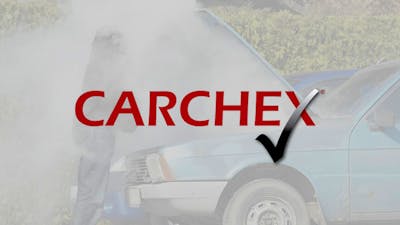Exclusionary vs Inclusionary Warranty
“We’re calling to speak to you about your car’s extended warranty...”
If those words don’t cause an immediate spike in your blood pressure, we don’t know what will. But be aware that good extended warranties can help you avoid costly repairs as your vehicle ages. There are several types of warranties, however, so it is important to know what you’re getting into. Let’s take a look at two popular types of warranties and see what makes them tick.
Popular Warranty Providers
What is an Exclusionary Warranty?
Exclusionary warranties are typically considered to be a better choice among extended warranties because of the way their coverage is structured. Instead of listing all of the things that are covered, exclusionary warranties list only the items that are not covered. This usually means that coverage is more extensive and more comprehensive than inclusionary warranties.
It might be simpler to think of exclusionary warranties this way: It’s easier to list what isn’t included than what is included, because the list of included coverage is so extensive.
What is an Inclusionary Warranty?
Opposite to exclusionary warranties, inclusionary warranties list the items that are not covered. These warranties are typically less expensive and less comprehensive in what they cover. In some instances, you may see these warranties called ‘listed item’ or ‘listed component’ plans, because of how their coverage is structured.
What is the Difference Between Exclusionary and Inclusionary Warranties?
Both warranties have the ability to save the policy holder money and give them peace of mind, but people seeking more comprehensive coverage with a wider array of covered components will want to opt for an exclusionary warranty. Inclusionary policies also tend to be more confusing and more difficult to understand, because of how they are worded.
Which Type of Warranty Is Right for Me?
If you own a newer vehicle that costs more to replace, an exclusionary policy will provide better coverage and a less confusing time trying to decipher what is and isn’t included. If you own an older, less expensive vehicle, inclusionary warranties may be a better choice, as they are cheaper to purchase.
What is the Cost of an Extended Warranty?
The price you pay for an extended warranty depends on several factors. When getting a quote for extended warranty coverage, you will be required to communicate the age and mileage of the vehicle to be covered. Most warranty providers also offer a few levels of coverage to more closely meet your needs, so you’ll pay less for less coverage.
In general, an extended warranty can cost between $1,000 and $4,000, but be aware that every policy and company is different. Make certain to ask questions and read your policy thoroughly before signing.
Do I Need an Extended Warranty?
While it’s true that there are bad apples in the extended warranty space, it’s also true that there are several good apples in the industry. Don’t let a fear of scams hold you back if you feel that an extended warranty will provide you with peace of mind and protection. Beyond your own sanity, an extended warranty can help prevent costly repairs as your vehicle ages, so it can be a good idea to obtain coverage if you rely on an older vehicle that is racking up mileage on a regular basis.
For more information on warranties, check out our Extended Warranties Insider’s Guide and our top picks for the Best Extended Warranties available in the industry today.










